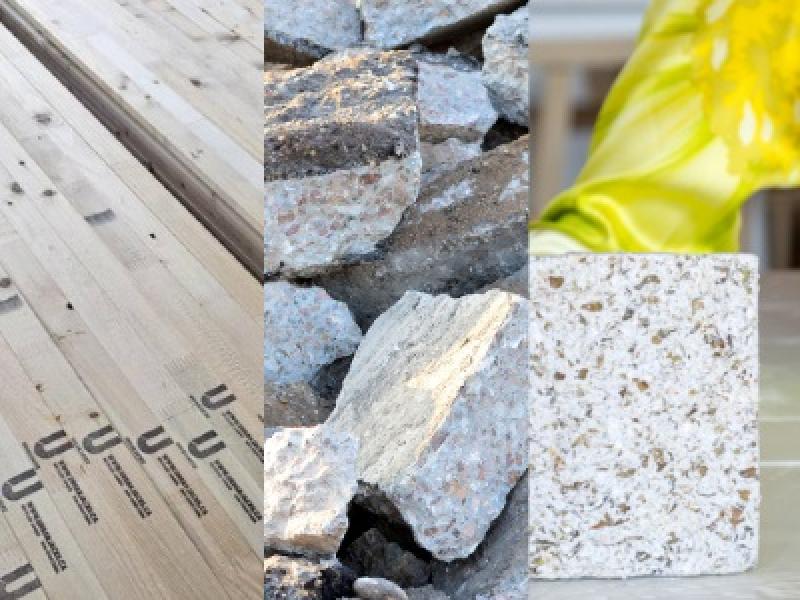
Experts from RMI, BGIS and QuadReal explore retrofits at CaGBC’s Building Lasting Change conference (Courtesy, CaGBC).
Decarbonizing a mid-to-large-size property portfolio requires a detailed roadmap that will provide the most bang for the retrofit buck, expert panelists told attendees at the Canada Green Building Council’s recent Building Lasting Change (BLC) conference.
“The carbon question has so many moving pieces,” said Phil Keuhn, principal in RMI’s Carbon Free Buildings practice.
“Thinking you’re going to (address it) when something needs changing in the building is really too late. It’s really important to have a game plan that influences procurement and capital planning in a way that allows you to systematically decarbonize.”
Keuhn worked on an extensive project developing a carbon neutrality investment roadmap for federally-owned buildings in Canada’s National Capital Region. That project, involving a diverse array of buildings from heritage structures to aircraft hangars, included many variables in play, from HVAC systems, leases, utility rates to the age and condition of the building envelopes.
Strategies for retrofits in building portfolios
Simplifying the carbon-neutral strategy at the building level wasn’t possible, Keuhn said. His firm focused on mass customizing the analysis on each building it studied, using Energy Plus and Modelkit software.
Andrew Penner, a senior manager with real estate services firm BGIS working on making the Government of Canada’s building portfolio carbon neutral, added that property firms now have to consider a whole range of methodologies with a focus on decarbonization when doing retrofits and equipment replacements.
His firm’s study of buildings across Canada found key themes in effective retrofits, including energy recovery, HVAC upgrades, the drive to electrification and adoption of heat pump technology.
“In this nation if you have a limited amount of resources and a large target in front of you, it makes sense to focus your efforts where you can make the largest carbon reduction value investment,” said Penner.
His team focused on deep retrofits, which according to the government’s analysis, have the potential to reduce carbon emissions by 26 per cent from a 2015-16 baseline.
Jamie Gray-Donald, senior vice president sustainability and environmental health and safety for property firm QuadReal, says his firm is deploying a retrofit investment plan over its portfolio of 300 buildings in all commercial building classes.
The firm tracks end-of-life dates and likely updates for all systems, natural gas equipment and other major mechanical equipment, where the payback on energy efficiency is greatest.
“Three years ahead of replacement you’re building-out business cases: like for like, zero-carbon later and zero-carbon now,” said Gray-Donald.
Cost of energy-saving retrofits and tenants
He said opportunities for carbon reduction retrofits and improvements vary by asset class.
In the office realm, the firm sees the most potential in waste-heat recovery and low carbon district systems or geothermal heat pumps. In residential the firm is keen on exploring in-suite heat pumps and electrification. In industrial, solar is the play on new structures and heat pump roof-top units on existing buildings.
The speakers said major projects on building envelopes or facades may not be justifiable economically on a purely carbon reduction basis.
“If you’re able to electrify the building, able to take advantage of high coefficient performance systems to heat and cool your space, in many building types the envelope becomes less of factor,” said Penner.
But envelope redevelopment can make economic sense if there are other drivers added in, such as deterioration or noise complaints, the speakers suggested.
In the commercial realm, the issue of passing on the cost of energy-saving retrofits to tenants can be an issue.
Carbon pricing necessary for economical fuel switching
Gray-Donald said his firm’s office leasing agreements allow for flow-through of costs for improvements that benefit the renters, for example, energy-efficiency measures that reduce utility costs.
“If we show energy reduction that flows through to their operating costs, we’ll recover the capital costs that accomplishes that,” he said.
The question becomes more complicated when retrofits, electrification and improvements to reach carbon reduction targets actually result in higher utility costs, he added.
Gray-Donald said his firm is making assumptions about carbon pricing based on the current federal regime and an eventual rise to the $300 per tonne range.
”We think even if the government changes long-term, these are the type of prices that are necessary prices for fuel switching to be economical.”
Property decisions and improvements based on the assumption of that escalating carbon price is the responsible, risk-averse thing to do, Gray-Donald said.
“At worst we’ll have buildings that are highly liquid and appealing to the best purchasers globally.”









